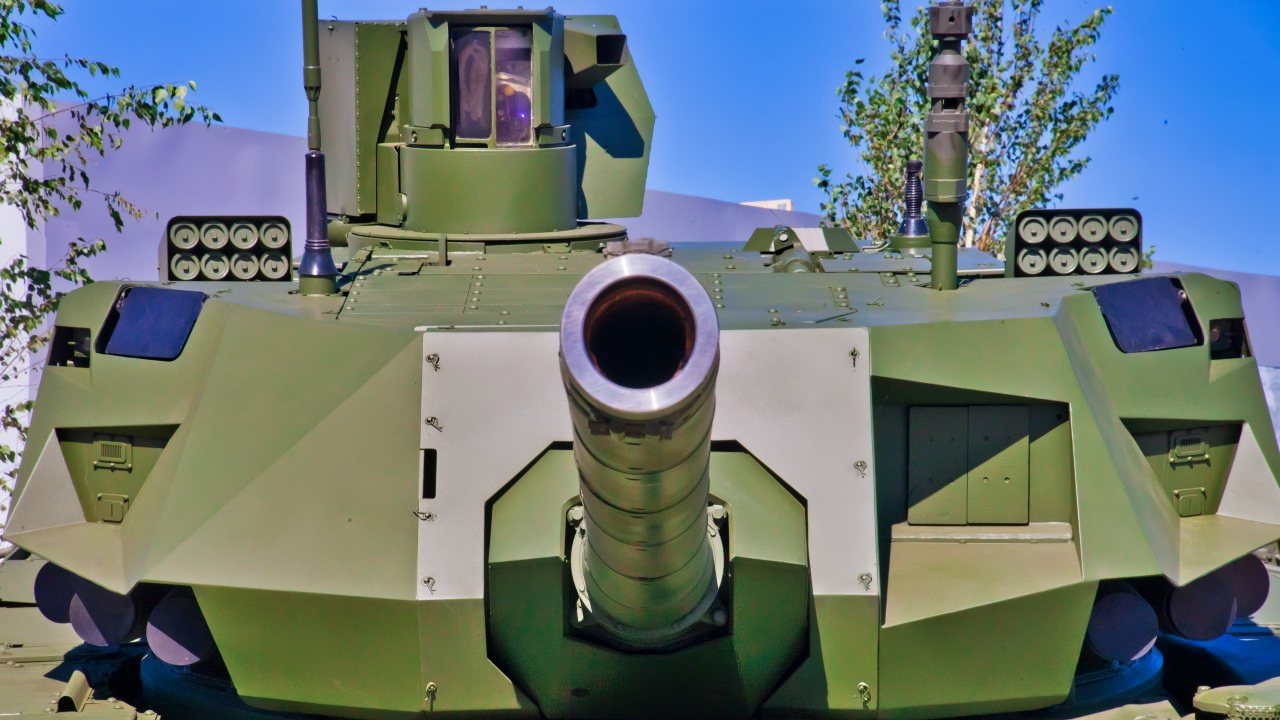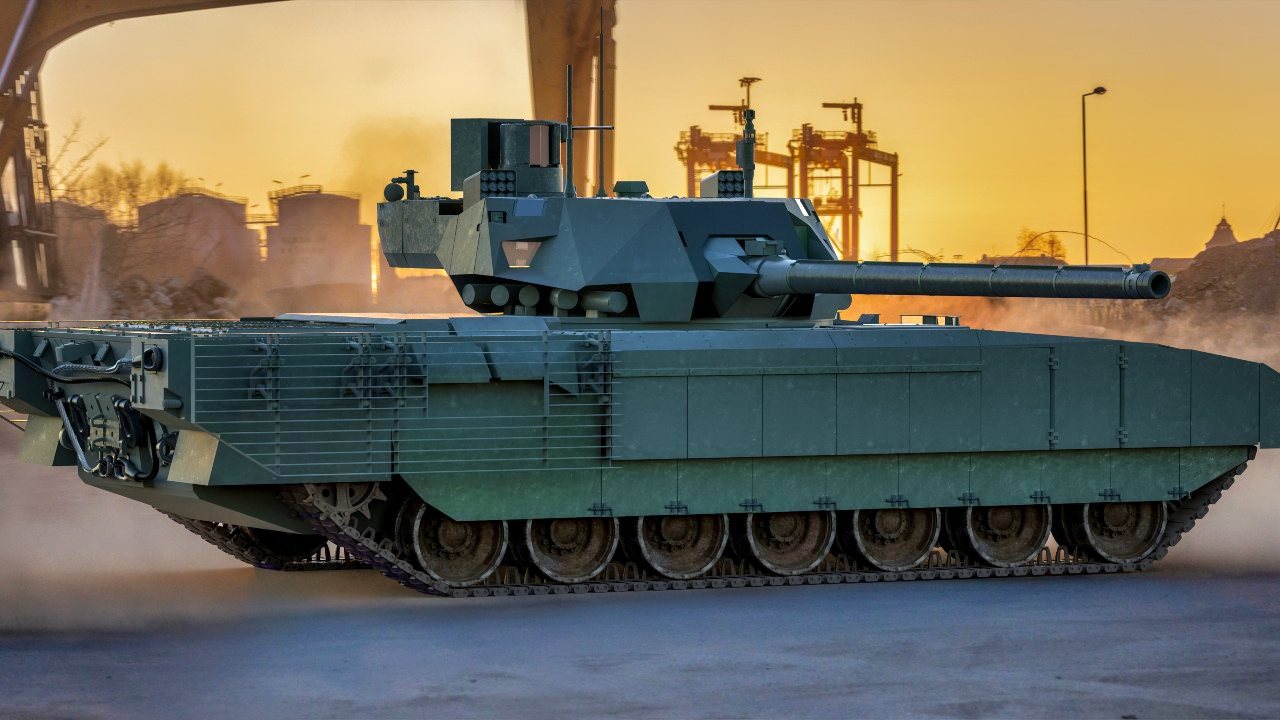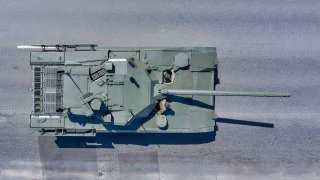Russia’s T-14 Armata Tank Nightmare Has Just Begun
The T-14 Armata, Russia's advanced main battle tank, boasts impressive specs like a 125 mm smoothbore gun, modular armor, and a 55 mph top speed. Despite its power, Russia has only produced about 20 units due to the tank's complexity and high cost.
Summary and Key Points: The T-14 Armata, Russia's advanced main battle tank, boasts impressive specs like a 125 mm smoothbore gun, modular armor, and a 55 mph top speed. Despite its power, Russia has only produced about 20 units due to the tank's complexity and high cost.

-In contrast, Russia is focusing on simpler, more cost-effective tanks like the T-72 and T-90, which are easier to produce and maintain.
-While the T-14 was field-tested in Syria and briefly deployed in Ukraine, it was quickly pulled back, highlighting the challenges of using complex systems in modern warfare, where function often trumps form.
The T-14 Armata: A Powerful Tank That Russia Won’t Mass Produce
One of the strangest phenomena in modern warfare is the gap between the expensive, complex systems the world’s advanced militaries procure versus the actual needs of those militaries once in combat.
The Americans experienced this painful reality in the Middle East during wars defined by the improvised explosive device and the unmanned aerial vehicle.
The Russians are experiencing the same with their tanks in Ukraine.
The Specifications on the T-14 Armata
The T-14 Armata is one of the most powerful, fearsome tanks in the world – at least on paper. This latest-generation main battle tank has an unmanned turret sporting a 125 mm 2A82-1M smoothbore gun fed by an autoloader.
According to Army Technology, that turret “carries a total of 45 rounds of ammunition, including ready-to-use ammunition. The main gun can also fire laser-guided missiles.” A more sophisticated 2A83 152 mm gun can also be equipped. So can secondary weapons such as a Kord 12.7 mm machine gun and a PKTM 7.62 mm machine gun.
The hull of the T-14 Armata looks otherworldly. It has a modular armor system composed of ceramics, steel, and composite material. This tank sports a low silhouette, thereby reducing the vulnerability of the machinery to enemy fire and favoring the survivability of the tank crew. The crew is also protected from unwanted explosions of the tank’s autoloader and ammunition stores. This was a problem for many previous Soviet-era tanks.

The T-14 has reactive armor in the front and bar armor out back, which enhances protection against anti-tank weapons. Russia’s T-14 is powered by an A-85-3A turbocharged diesel engine, producing up to 1,200 horsepower. It has a 12-speed automatic transmission, too. An Armata has a standard range of 310 miles and a top cruising speed of about 55 miles per hour.
Russia wanted a whopping 2,300 units of these tanks.
Needless to say, that lofty goal was scaled back both because of the complexity of the systems involved and the obscenely high cost. Russia has about 20 of these systems, and it has no intention, or even capability at this point, to mass-produce more of them.
The T-14’s Service Record (So Far)
The T-14 was field tested in the killing fields of Syria. It performed adequately, although there was little evidence the T-14s did anything more than a T-90M would have done. Meanwhile, in the Ukraine War, Russia’s greatest conflict since the Soviet-Afghan War, the T-14s have been pulled back from the fighting.
While they were initially deployed and are believed to have been involved in a smattering of engagements, they were used mostly in support functions. They were quickly and quietly pulled back from the fighting and returned to Russia. It is not believed they will ever be deployed to Ukraine again.
Russia’s industrial base has not only survived the Western sanctions lobbed against it at the outset of the Russian invasion of Ukraine, but it is likely stronger today than it has been in decades.
Yet the Russians are not prioritizing the mass production of these advanced, costly systems. Instead, Russia is fixated on purchasing more variants of the T-90 MBT. Come to think of it, Russia is even more interested in mass-producing the Soviet-era T-72 MBT than they are in the Armata.
The Cult of the Complex
Function beats form every time in modern warfare. It is a timeless lesson. Cost is always a significant factor, and simplicity should always be preferred over complexity. The Russians are doing just fine with their old T-72s and the slightly more sophisticated T-90s.

These systems are far cheaper, easier to produce, better to maintain, and less complex to operate than the T-14s. Russia is smart not to waste its money on building more T-14 Armatas.
Author Experience and Expertise: Brandon J. Weichert
Brandon J. Weichert, a National Interest national security analyst, is a former Congressional staffer and geopolitical analyst who is a contributor at The Washington Times, the Asia Times, and The-Pipeline. He is the author of Winning Space: How America Remains a Superpower, Biohacked: China’s Race to Control Life, and The Shadow War: Iran’s Quest for Supremacy. His next book, A Disaster of Our Own Making: How the West Lost Ukraine, is due October 22 from Encounter Books. Weichert can be followed via Twitter @WeTheBrandon.
All images are Creative Commons or Shutterstock.
From the Vault
Russia Freaked Out: Why the U.S. Navy 'Unretired' the Iowa-Class Battleships
Battleship vs. Battlecruiser: Iowa-Class vs. Russia's Kirov-Class (Who Wins?)


